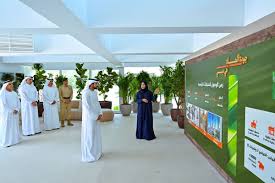Dubai’s Crown Prince launched the Dubai Quality of Life Strategy 2033 on Tuesday, which aims at turning Dubai into the world’s best city to live in.
Taking to X, Sheikh Hamdan bin Mohammed bin Rashid Al Maktoum announced the strategy that includes 200 projects and initiatives, which ensure that residents can access essential services within 20 minutes.
The project aims at turning Dubai into a pedestrian-, environment- and family-friendly city.
“We have today approved the Dubai Quality of Life Strategy 2033 as part of our efforts to raise our global standing in the economy, as well as in the areas of innovation and wellbeing. The vibrancy and cultural diversity of our society are key to our development journey,” said Sheikh Hamdan.
Innovative initiatives
In regards to public amenities like parks and beaches, the strategy will incorporate the development of over 200 parks, expanding cycling tracks on beaches by 300 per cent, extending the length of night swimming beaches by 60 per cent, designating new beaches exclusively for women, and comprehensive plans for developing Dubai’s outlying areas.
Sheikh Hamdan reviewed the new vision for designing model neighbourhoods covering three districts across Dubai: Al Mizhar 1, Al Khawaneej 2, and Al Barsha 2. This new vision aims to enhance the infrastructure of these existing neighbourhoods by upgrading social amenities and services, promoting soft mobility options for healthier living environments, and improving connections between community hubs such as parks, mosques, and shops.
More than 115 km of pedestrian and cycling tracks will be constructed, more than 3,000 trees and plants will be planted, and more than 20 investment opportunities will be created during Phase 1 of the strategy for the residents of Al Khawaneej 2 and Al Barsha 2.
The redevelopment plans include upgrading the existing collector streets and constructing shaded canopies, lanes for bikes and e-scooters, pedestrian walkways, restrooms, and family recreational spaces.
The vision also involves landscaping, constructing distinctive architectural gateways for each residential community, giving a unique character to every neighbourhood, and improving alleyways and street intersections to boost safety and provide pedestrian lanes.
Furthermore, it offers investment opportunities for locals, enhances public services, and delivers the ’20-minute city’ concept, which aims to ensure residents can access 80 per cent of essential services within a 20-minute journey aboard soft and sustainable mobility options.
The Crown Prince also reviewed the designs of the next generation of parks in Dubai, featuring new and innovative design elements that cater to the diverse needs of the community, reflect the unique character of each district, and incorporate sustainable activities to foster wellbeing. More than 30 parks with the new designs will be developed across the emirate within three years.
Natural environment
The strategy includes a series of projects and initiatives aimed at enhancing wellbeing while maintaining environmental sustainability. Key components include 376 stations and sites dedicated to monitoring aquatic environments and air pollutants, and the world’s largest waste-to-energy conversion project, whose first phase has already been completed. The strategy seeks to provide eight natural wildlife reserves spanning an area of 1,266 square kilometres, and marine reserves covering 32 square kilometres.
The strategy also aims to preserve Dubai’s rich biological diversity. The emirate is home to 1,524 species of living organisms, including 342 species of birds, 46 species of mammals, 51 species of reptiles, 315 species of plants, 188 species of fish, and 582 species of invertebrates.
Key initiatives include expanding electricity charging stations across Dubai and developing the Mohammed bin Rashid Solar Park, the world’s largest single-site solar energy park.
Integrated development
This plan to improve Dubai’s beachfront areas entails various development projects including upgrading Jebel Ali Beach, Jebel Ali Caravans Camp Beach, as well as Jumeirah, Umm Suqeim, and Al Mamzar Beaches.
Key targets include a 300 per cent increase in public services provision by 2025, ensuring 100 per cent accessibility for people of determination and senior citizens, expanding cycling tracks on beaches by 300 per cent, extending the length of night swimming beaches by 60 per cent, and designating new beaches exclusively for women.
These initiatives are aligned with the objectives of the Dubai 2040 Urban Master Plan, which aims to increase the length of public beaches by 400 per cent.
Exceptional experience
To ensure an exceptional tourist experience, the strategy will include enhancing the tourism appeal of areas like Hatta, Lehbab, Al Marmoom, Al Lisaili, Al Faqa’, Nizwa, Al Awir, and Margham. It involves several initiatives to create investment opportunities for families, support farmers and local products, and conserve natural reserves and archaeological sites.
The strategy’s initiatives include a 162 per cent increase in services like health, schools, parks, and mosques. The strategy also entails meeting the housing needs of nationals in outlying areas, development of the Saih Al Salam Path with events and investment opportunities, and several enhancements in Hatta such as hiking, hospital and educational facility upgrades, and housing projects for nationals.
Expanding greenery
The strategy recognises that green spaces, apart from having aesthetic value, have considerable environmental significance, since they play a key role in reducing carbon emissions, improving air quality, and lowering temperatures.
The strategy seeks to increase the planting of trees and flowers in the streets, public roads, squares and parks, in line with Dubai’s sustainability standards, as well as implement sustainable irrigation projects.
Greenery is one of the main elements supporting the strategy, with a portfolio of projects aimed at increasing the total green area in the emirate through the implementation of several major initiatives by 2033. This includes expanding the area of public parks from 23 to 64 square km and developing over 200 parks and squares in different areas across the emirate.


